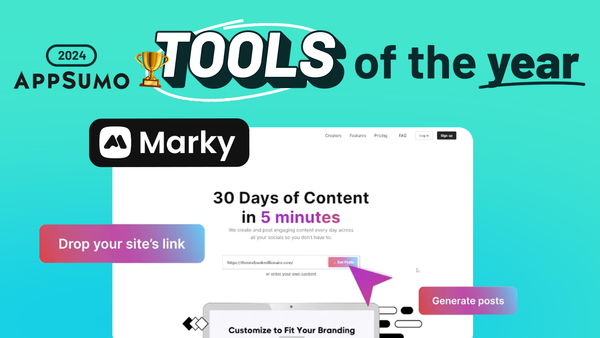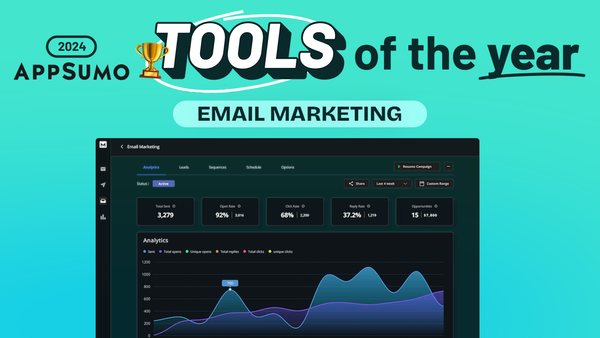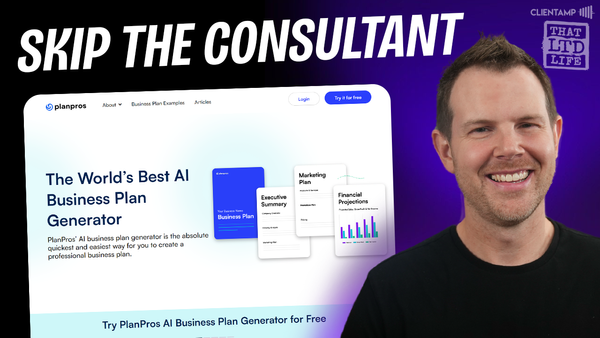Why Are There So Many AI Copywriting Tools? GPT-3 Explained
Discover how GPT-3 sparked an AI copywriting revolution and learn what's behind the surge in AI writing tools - plus tips for choosing the right one

Introduction
In recent years, the world of content creation has been revolutionized by the emergence of AI-powered copywriting tools. These tools, which seem to have appeared out of nowhere, have left many people wondering about their sudden proliferation and the vast differences in their pricing structures. This article delves into the fascinating world of AI copywriting, exploring the technology behind these tools, their implications for the future of content creation, and the key players in this rapidly evolving field.
At the heart of this technological revolution lies GPT-3 (Generative Pre-trained Transformer 3), a groundbreaking language model developed by OpenAI. We’ll explore how GPT-3 works, its capabilities, and how it has sparked a new era of AI-assisted writing. We’ll also examine the role of tech giants like Microsoft and visionaries like Elon Musk in shaping this landscape.
Whether you’re a content creator, marketer, or simply curious about the future of AI, this comprehensive guide will provide you with valuable insights into the world of AI copywriting tools and their potential impact on various industries.
GPT3 Explained [01:17]
The Birth of GPT-3
GPT-3, or Generative Pre-trained Transformer 3, is a revolutionary language model that has transformed the landscape of natural language processing and AI-assisted writing. To understand its significance, we need to look at its origins:
- OpenAI, co-founded by Elon Musk and other tech visionaries in 2015, initially set out to develop AI that would benefit humanity as a whole.
- In 2018, Musk left the board of OpenAI due to potential conflicts of interest with Tesla’s AI initiatives.
- OpenAI transitioned from a non-profit to a for-profit organization in 2019.
- Shortly after, OpenAI secured a billion-dollar deal with Microsoft, signaling a major shift in the AI landscape.
The Technological Leap
GPT-3 represents a quantum leap in natural language processing capabilities:
- Announced in June 2020, GPT-3 was trained on an unprecedented scale, using trillions of words from the internet.
- Its capabilities include answering questions in natural language, translating between languages, and generating coherent, human-like text.
- GPT-3 boasts 175 billion machine learning parameters, dwarfing its predecessor, Microsoft’s Turing NLG, which had 17 billion parameters.
- This 10x improvement in just a few months showcases the rapid pace of AI advancement.
Capabilities and Limitations
GPT-3’s output quality is often indistinguishable from human-written content, but it’s not without its quirks:
- The model excels at creative and persuasive writing, skills that are relatively rare among humans.
- However, it struggles with factual knowledge and tasks that humans find intuitive.
- This unique skill set makes GPT-3 particularly suited for content creation and copywriting tasks.
The Impact on Content Creation
The introduction of GPT-3 has significant implications for the content creation industry:
- AI-assisted writing tools powered by GPT-3 are becoming increasingly prevalent.
- These tools can potentially democratize high-quality content creation, making it accessible to a broader audience.
- However, they also raise questions about the future of human writers and the authenticity of AI-generated content.
What is the API [03:31]
Understanding APIs in the Context of GPT-3
The Application Programming Interface (API) is the crucial link between GPT-3 and the various AI copywriting tools flooding the market:
- An API acts as a bridge, allowing different software applications to communicate with each other.
- In the case of GPT-3, the API enables third-party applications to access and utilize its language processing capabilities.
- This accessibility has led to the rapid development of numerous AI copywriting tools, each with its unique features and interfaces.
OpenAI’s API Structure
OpenAI’s API for GPT-3 is not a one-size-fits-all solution. It consists of several different engines, each with its own strengths and pricing structure:
- The main engines are DaVinci, Curie, Babbage, and Ada.
- DaVinci is generally considered the most capable engine, but it’s also the most expensive to use.
- The choice of engine affects both the quality of the output and the cost of running the AI copywriting tool.
The Role of Developers
The effectiveness of an AI copywriting tool isn’t solely dependent on GPT-3’s capabilities:
- Developers play a crucial role in creating the software that interfaces with the GPT-3 API.
- Their skill in navigating the API and optimizing requests can significantly impact the tool’s performance and user experience.
- The “secret sauce” of each product lies in how developers leverage the API to create unique features and functionality.
Pricing and Business Models
The API’s pricing structure has significant implications for the business models of AI copywriting tools:
- Tools that rely heavily on the more expensive engines like DaVinci face higher operational costs.
- This can lead to higher subscription fees or the need for frequent upsells to maintain profitability.
- Cheaper tools may use less capable engines or limit usage to manage costs, potentially affecting output quality.
Should you buy an AI copywriting tool [05:42]
Evaluating the Cost-Benefit Ratio
When considering whether to invest in an AI copywriting tool, it’s essential to weigh the potential benefits against the costs:
- Pricing models vary widely, from one-time purchases under $50 to subscriptions costing thousands of dollars annually.
- The value proposition depends on your specific needs, usage frequency, and the quality of output required.
- Consider how the tool’s capabilities align with your content creation goals and workflow.
Understanding the Limitations
While AI copywriting tools offer impressive capabilities, they’re not without limitations:
- The quality of output can vary depending on the engine used and the specific implementation.
- AI-generated content may require human editing and fact-checking to ensure accuracy and coherence.
- Overreliance on AI tools could potentially impact your writing skills or unique voice over time.
Assessing Long-Term Viability
When choosing an AI copywriting tool, consider its long-term sustainability:
- Tools offering lifetime deals may struggle to remain profitable as API usage costs accumulate over time.
- Look for products with sustainable business models that can support ongoing development and improvement.
- Consider the company’s track record, user reviews, and update frequency when making your decision.
Evaluating Features and Integrations
Different AI copywriting tools offer various features and integrations that can impact their usefulness:
- Look for tools that offer a wide range of templates and use cases relevant to your needs.
- Consider whether the tool integrates with other software in your content creation workflow.
- Assess the user interface and ease of use, as these factors can significantly impact your productivity.
Conclusion [07:04]
The rise of AI copywriting tools, powered by GPT-3, marks a significant shift in the content creation landscape. These tools offer unprecedented capabilities in generating human-like text, potentially revolutionizing how we approach writing tasks across various industries.
As we’ve explored, the technology behind these tools is complex, involving sophisticated language models, APIs, and skilled development teams. The rapid advancement of AI language processing, exemplified by GPT-3’s leap over its predecessors, suggests that we’re only at the beginning of this technological revolution.
However, the decision to adopt AI copywriting tools should be made carefully. While they offer impressive capabilities, they also come with limitations and potential long-term implications for content creators. The wide range of pricing models and features available in the market requires thorough evaluation to find the right fit for your specific needs.
Looking ahead, it’s clear that AI-assisted writing is here to stay. Like other technological advancements that have transformed creative industries, from drum machines in music to digital editing in film, GPT-3 and its successors will likely become integral parts of the content creation process.
For content creators, marketers, and businesses, staying informed about these developments is crucial. Whether you choose to embrace AI copywriting tools or not, understanding their capabilities and limitations will be essential in navigating the evolving landscape of digital content creation.
As we continue to explore and refine these technologies, the key will be finding the right balance between AI assistance and human creativity, ensuring that we harness the power of AI to enhance, rather than replace, human ingenuity in writing.
To stay updated on the latest developments in AI copywriting tools and their impact on content creation, consider following industry experts and joining relevant communities. You can connect with David Swift, the creator of this content, on various platforms:
- 🌐 Web: https://clientamp.com
- 📘 Facebook: http://facebook.com/groups/daveswift
- 🐦 Twitter: https://twitter.com/davidswift
By staying informed and adaptable, you’ll be well-positioned to navigate the exciting future of AI-assisted content creation.




